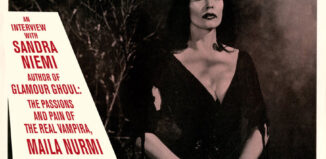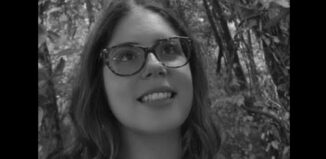Perspectives
by Deanna Mobley
They say the eyes are the windows to the soul. I wonder how much truth is in that statement. When I look at my six year-old daughter, her goodness and innocence reflect in her eyes and in her smile. But when I look at my reflection, at my eyes, all I see is the tired, middle-aged woman I have become. Time has slipped by, dragging me in its wake. I feel as if I have accomplished little with my life other than raising my children. I try too hard to be what everyone else wants, to meet their expectations, and I let my dreams and desires flit away.
Oddly, this is readily apparent each time I ride in the car. I often drive in silence or listen to an audiobook with my younger daughter. When my older daughter jumps in after school, she immediately claims the aux cable connected to the stereo. She fiddles with her phone for a minute and music fills the car. If my husband drives, he immediately turns on whatever music strikes his fancy. My older sons were always quick to tune in their music. I don’t mind most of my family’s music. Over the years, I have even grown to like some of it. Yet, sometimes it would be nice if they asked me what I wanted. The only problem is, I don’t know what I like anymore.
Rediscovering oneself is a difficult task. I am no longer the shy, awkward teenage girl that I was twenty-five years ago, tormented and teased for my hand-me-down clothing, too scared to stand up for myself. Nor am I the young mother of twenty years ago, trying to balance an infant and a new pregnancy while working full time. I have moved past those stages of life, but sometimes I feel as if my identity is still based on my younger selves. It is time that I start understanding not only who I am now, but also who I want to be.
I like to run. I started about four years ago as a way to build endurance before my black belt test. In the winter, I usually run indoors on a treadmill. I watch a show on my tablet or, more recently, read class assignments. I prefer to run outside early in the morning. Few people are out that time of day, and I enjoy the quiet time to reflect on my life.
The path I follow marks the outer edge of a park in the center of my neighborhood. Early in the morning, the streetlamps cast circles of light on the ground. Just as I reach the end of one circle, the next one is always there waiting for me, unless of course it’s burned out. Then I must brave the darkened path, hoping the path is clear of debris waiting to trip me up.
As I reflect on my life and my identity, I feel as if I am running in the dark on a gravel path. I grope along, relying on the small amount of ambient light to show the way, scurrying from one circle of light to the next. I am not one to engage in much introspection, especially not for others’ perusal. I prefer to keep my self-doubts private and unacknowledged while I pretend that all is well. Yet, writing inspires me to meditate on my failings and on my achievements.
A few weeks ago, I took the opportunity to visit our local art museum with my six year old daughter Khrystalle. She wanted to play in the hands-on gallery of the art museum, the Experiencenter. I sought inspiration. I admire artists’ ability to express their thoughts and feelings through a visual medium, and I hoped that their example would help me to find the words I needed to express my thoughts.
The theme of the Experiencenter was performing arts. A low wood platform formed a stage against the back wall, and a wooden wall painted to resemble theater curtains was attached to it. Wooden doors in the center opened or closed to change the stage’s scenery. Khrystalle rifled through the costumes hanging on hooks near the stage and tried on a burgundy velvet dress with gold trim and laces in the front. The dress flowed to the floor, and the sleeves were fitted to the elbow and then flared as they reached her hands. With her hair in a bun, she appeared very elegant. I told her she looked like Celie from the Castle Glower Series by Jessica Day George. Khrystalle informed me that she was a queen and handed me a kimono and a scarf to wear. Then she walked around the stage, lost in an imaginary world, while speaking a quiet monologue.
How easily and confidently she slipped into her chosen role, with little thought for all that was happening around her. I, on the other hand, felt embarrassed to wear a child’s costume and slipped out of the kimono and scarf as soon as more people entered the area. As I watched my daughter, I was reminded of Shakespeare’s statement from As You Like It, “All the world’s a stage, / And all the men and women merely players.” I play various roles in my life, depending on the circumstances and the need. I question whether I am simply a product of my roles or if there is more to me.
The lower level of the art museum contains some exhibits depicting African art, as well as Native American and Oceanic art. Among the displays are a variety of masks. The masks vary from simple wood masks to the elaborately beaded elephant mask and costume of the Bamileke people. Many of the masks played vital roles in the cultures’ religious ceremonies. As I examined the masks, I considered the masks found in our society. Masks not used for religious purposes but to hide who we truly are. Maybe we hide behind our makeup or our clothes, or behind our economic status. I think even the roles we fill can become our masks. But what are my masks?
I rarely wear makeup, except maybe for a special occasion. I dress comfortably, usually in jeans and a t-shirt, or a sweater for winter. I am not hiding behind my clothes or my makeup. But what about my roles? Are they my masks? I submerged myself into my role as a mother for many years. I was trapped in a box. I could stretch and feel the sides hemming me in. Every once in a while I poked my head out, just to see if the world still existed. For a few short months, I took an art class at a local community college, and I was free. Then, I didn’t have enough money to continue, and I felt myself slowly sinking back into my box, this time a much smaller box. I finally broke out of my box by taking martial arts classes and earning a black belt.
Occasionally, I retreat into my role as a karate instructor. I did this just last week, when my nieces and nephews were visiting at my house. One of my nephews came into the family room carrying my sheathed sword, saying that it was fake. I immediately grabbed it and showed him that it was real, not sharpened, but still real enough to injure someone. Then I talked to him quietly but sternly, just as I do my students that are getting into trouble. “This is my house,” I told him. “You may play with the toys, but do not touch the weapons or the computers without permission. Do you understand?” He replied, maybe a bit defiantly, “Yes.” I looked him in the eyes and said, “Yes,ma’am?” After a moment’s thought, he finally gave me a “Yes, ma’am.”
I wonder who I would be without my masks. I like to imagine that I am a strong, confident woman, though maybe a little too outspoken at times. But is that who I really am, or is it just a façade? Maybe I am really a shy little girl that is too ashamed to admit it. Some of the words to Delain’s song “My Masquerade” run through my mind:
Take off your mask
The world will see
The freak in you
The freak in me
I am not sure if I want the world to see my true self. I’m not sure if I want to see my true self. What if I am not who I think I am?
I am looking at things the wrong way. My perspective is off. A couple of years ago, I grew frustrated that the toilet in our downstairs bathroom rocked. I knew if it continued, it would leak and rot the floor. I called the plumber and arranged an appointment, then I called my husband. “It doesn’t rock,” he said, “I just used it this morning.” “Yes, it does,” I insisted. We argued back and forth, each of us insisting we were right. When my husband arrived home from worked, he called me into the bathroom and grabbed the sides of the toilet. “It doesn’t rock,” he repeated. I grabbed the back and front of the toilet and rocked it. “Yes, it does,” I said. We were both right. The toilet did not rock from side to side, but it did rock front to back.
In The 7 Habits of Highly Effective People, Steven R. Covey shares an experience from a business class in college. The professor passed out to half the class a line drawing of an old woman. To the other half, he passed out a line drawing of a young woman. After they looked at the drawings for a while, he showed the class a picture that combined both line drawings. The half of the class that were given the drawing of the old woman could only see the old woman in the picture, and likewise for those that had the drawing of the young woman. They argued about what they saw, even going so far as to insinuate the other portion of the class was stupid. Then someone got up and traced out the woman they saw. Eventually, each half of the class began to see the picture from the other group’s perspective, but it took work to adjust their viewpoint. It reminds me of Obi-Wan’s statement to Luke, “So what I told you was true, from a certain point of view.”
At the beginning of this essay, I stated that I felt as if I have accomplished very little other than raising my kids. That is not entirely true; I looked at my life from only one perspective. I only saw the toilet that rocked one way or the drawing of the old woman. When I am honest with myself, I acknowledge that I have accomplished a great deal. Just helping five kids grow into confident, successful beings is a great accomplishment. However, it is difficult to appreciate the full picture while bogged down in the day-to-day minutiae of living.
At the art museum, Khrystalle and I visited an exhibit on origami. The last room of the exhibit contained a single large sculpture that initially reminded me of a distorted version of the domed jungle gyms that used to be found on playgrounds. The sculpture was created from panels of stiff paper, maybe cardboard, riveted together. From the end, the piece seemed almost like a snake, with undulating curves undulating reaching over my head. At home, I looked back at a picture of my daughter and me standing in front of the piece. Instead of misshapen playground equipment, I saw wings spreading out to either side of us, as if we turned into a bird soaring through the sky. Because I initially focused only on the details of the sculpture, I failed to recognize the beauty of the piece, just as I am unable to appreciate my life when I focus only on the parts. I write about looking behind my roles and stripping off my masks, but now I realize that they are a part of me, a part of my identity.
In the middle of the glass exhibit, a curved metal framework sits on a pedestal. An obtuse glass triangle, about six inches thick, hangs point down from the framework. The smooth, clear outer layer of glass provides a window to see the inner beauty, bits of color embedded within. I still see a tired, middle-aged woman peering out at me from the mirror. But behind the exhaustion, behind the age, lurks a lifetime of experiences, bits of colored glass that help define who I am. My experiences, my beliefs and faith, my choices, and my roles and masks work together to form my identity. When I step back and view the whole picture, I realize that I do know who I am.
BIO
 Deanna Mobley is the mother of five children. She has worked as a karate instructor for five years and is also an independent study student at Brigham Young University. She plans to eventually write stories and novels for children and young adults. Aside from writing, Deanna also enjoys reading, knitting, and playing with her family. This is her first publication.
Deanna Mobley is the mother of five children. She has worked as a karate instructor for five years and is also an independent study student at Brigham Young University. She plans to eventually write stories and novels for children and young adults. Aside from writing, Deanna also enjoys reading, knitting, and playing with her family. This is her first publication.


















